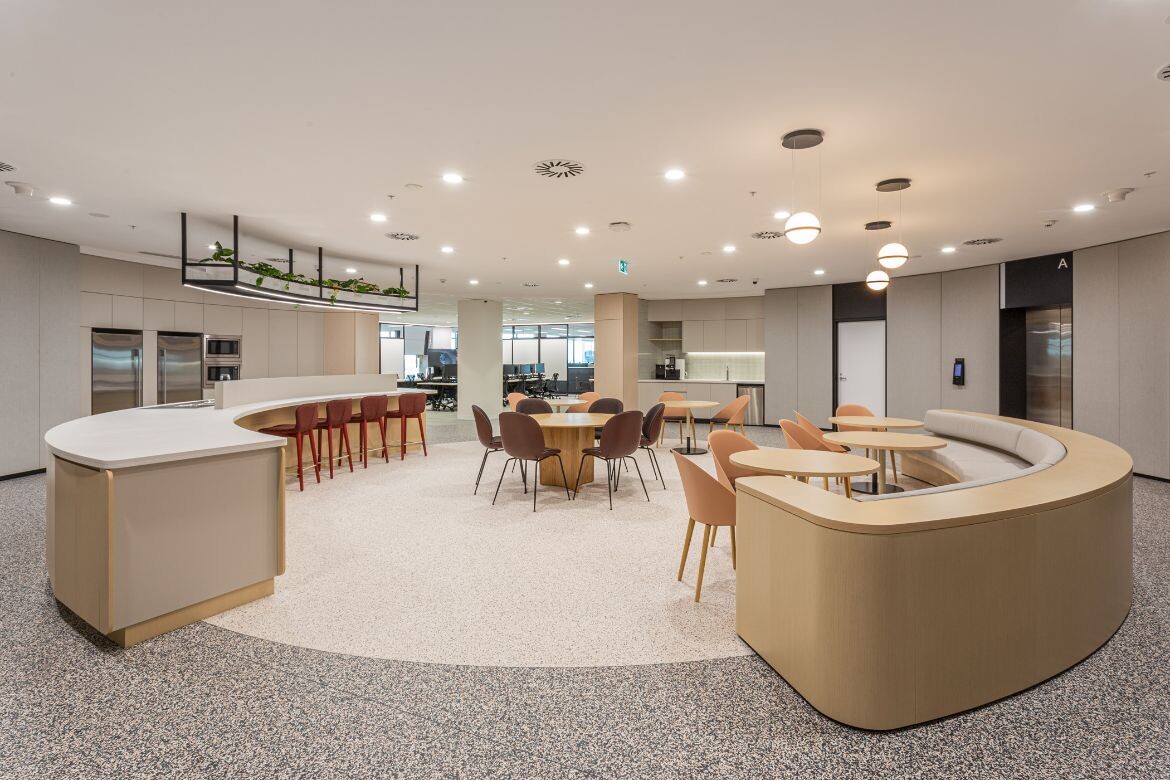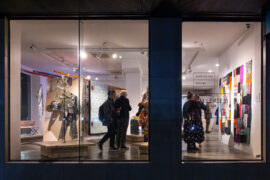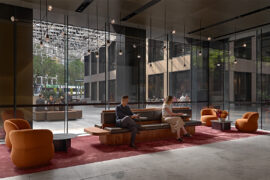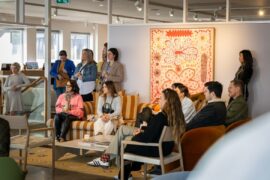Future X Collective co-founder and managing/creative director at Futurespace, Angela Ferguson, comments on the phenomenon of resenteeism. Good design is at the heart of the solution.

Angela Ferguson.
April 3rd, 2023
In today’s fast-paced and constantly evolving business environment, companies are always on the lookout for ways to increase productivity and employee engagement. One often-overlooked solution is good, quality design. A well-designed workplace can greatly impact employee wellbeing, and in turn, lead to increased productivity and job satisfaction.
Good design is not just about making a space aesthetically pleasing. It’s about creating a functional and comfortable environment that enhances the overall employee experience, with issues such as sustainability and flexibility in mind. When employees feel valued and appreciated, they are more likely to be engaged and motivated in their work.
Companies should invest in innovative, neuro-diverse, highly functional and future-focused design to create a better workplace for their people, which will not only improve their experience but also lead to increased productivity and positive work culture.
Australian companies will see a significant return on investment where they choose to devote resources to workplace design. We know from several studies that businesses that incorporate design elements promoting employee wellbeing see a reduction in absenteeism, increased productivity, and employee retention. In fact, companies that don’t invest in this are starting to see the rise of a new trend – resenteeism.
Related: HDR comments on wellness-driven cities

Resenteeism is a relatively recent workplace term to describe people remaining in a role despite feeling desperately unhappy. Factors that contribute to this may include increased cost of living, social pressures and other unique factors. Business leaders can take proactive steps to create a well-designed workplace and prevent resenteeism in their organisations. If you still need persuading, here are 3 key business outcomes that will occur when good design is placed in the spotlight:
1. Enhances productivity
Colour is a powerful communication tool that can influence our mood and productivity. The way colour impacts us tends to be universal rather than subjective, meaning certain colours will trigger certain emotions in all humans.
Colour and texture when used on furniture have a recognised effect on wellness and inspiration in the office. In terms of wellness and belonging, colour theory is often used to align with the client’s vision in their environment. Often in workplace design, we’ll refrain from using too much pattern that can be distracting and contribute to feeling overwhelmed in an already stressful environment.
The selection of an appropriate palette can greatly influence mood, behaviour, and productivity. Warm hues, such as reds and oranges, have been found to stimulate the brain and prompt action, making them suitable for certain areas of the workplace. On the other hand, cool colours such as blue and green have been shown to elicit positive cognitive and emotional responses, making them commonly used in workplaces to promote a sense of calm and productivity.
2. Boosts collaboration
As more people are coming into the office primarily to socialise and collaborate, a well-designed workplace which facilitates this has never been so important. Designing spaces specifically for collaboration encourages team members to work together, facilitating ideas generation and innovation.
An open and collaborative workplace design can also foster social networks, teamwork and communication among employees. Features such as shared workspaces, meeting areas, and communal team spaces can bring employees together, leading to better collaboration and idea-sharing.
With teams now connecting both in the office and remotely, spaces need to be set up with the right technology to support better teamwork and supporting people to work together and exchange ideas.

3. Puts health and safety in the spotlight
Post-pandemic, most knowledge workers report spending greater amounts of time at their screens, on back-to-back virtual meetings, often without breaks or incidental exercise that they would normally have had through travel or the daily commute. Designing an experience of work within the office that addresses these physical needs is now crucial to the long-term wellbeing of employees.
To improve the overall ergonomics within your workplace, it is important to consider the basics such as ensuring all seating – especially lounges, sofas and other flexible seating is at the right height for working on laptops or viewing screens. Screen sizes, adjustable monitor arms, laptop stands and ergonomic task seating at each individual (height adjustable) desk is essential. Sit-to-stand desks have become a priority for many organisations and their staff as well.
A good quality ergonomic workstation can reduce the risk of repetitive strain injuries, while good air quality can help prevent respiratory problems, tiredness and poor concentration.
4. Drives a positive and present workplace culture:
The design of the workplace can play a big role in attracting new talent and ensuring existing team members are still inspired by the workplace. A well-designed space can foster collaboration, creativity, and a sense of purpose among employees. This can lead to a more harmonious and engaged workforce.
Not only can an investment in workplace design boost employee morale by making people feel valued and appreciated, it can also lead to lower turnover rates and higher job satisfaction. Employees are more likely to be engaged and motivated in their work when they feel that their employer cares about their comfort and wellbeing.
Finally, design elements such as shared break rooms, kitchens, games/recreational areas and other communal spaces can create a sense of community among employees. These spaces provide opportunities for informal ‘networking’, building relationships and promoting a positive work culture.
Future X Collective
futurexcollective.com.au
Futurespace
futurespace.com.au
We think you might also like this education Q&A with Scott Allardyce of Spowers.
INDESIGN is on instagram
Follow @indesignlive
A searchable and comprehensive guide for specifying leading products and their suppliers
Keep up to date with the latest and greatest from our industry BFF's!

The Sub-Zero and Wolf Kitchen Design Contest is officially open. And the long-running competition offers Australian architects, designers and builders the chance to gain global recognition for the most technically resolved, performance-led kitchen projects.

BLANCOCULINA-S II Sensor promotes water efficiency and reduces waste, representing a leap forward in faucet technology.

A longstanding partnership turns a historic city into a hub for emerging talent

Gaggenau’s understated appliance fuses a carefully calibrated aesthetic of deliberate subtraction with an intuitive dynamism of culinary fluidity, unveiling a delightfully unrestricted spectrum of high-performing creativity.

The Australian Design Centre (ADC) is facing a crisis as core funding cuts leave NSW without a government-funded organisation dedicated to craft and design practice.

Grimshaw has completed a revitalisation of Collins Place, adding new layers to an already historically and architecturally rich site in Melbourne’s CBD.
The internet never sleeps! Here's the stuff you might have missed

The Australian Institute of Landscape Architects (AILA) Tasmanian Chapter held its annual awards at Hobart’s Brickworks on Friday 27 June.

Following the first release of exhibitors, this second instalment brings together another set of brands spanning furniture, finishes, lighting and flooring, confirmed to take part in Melbourne this September.